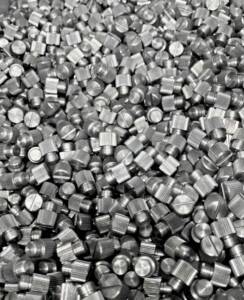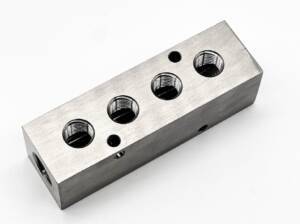Benefits of Thermal Deburring
Thermal deburring is a metal finishing process that employs controlled explosions and extreme heat to remove burrs, small protrusions, and sharp edges from metal parts, ensuring smoother and safer surfaces.
 WHY SHOULD YOU THERMAL DEBURR YOUR PARTS?
WHY SHOULD YOU THERMAL DEBURR YOUR PARTS?
- Improved part quality: Thermal deburring can help to remove burrs and other imperfections that may be present on machined parts. This can improve the overall quality of the part, making it more functional and reliable.
- Increased productivity: Since thermal deburring is a relatively fast process, it can help to increase productivity in manufacturing settings. This can lead to faster turnaround times and increased output.
- Cost savings: By eliminating the need for manual deburring or other time-consuming processes, thermal deburring can help to reduce labor costs and improve efficiency. Additionally, it can help to reduce the risk of rework or rejected parts, which can save money in the long run.
- Burr Removal: The primary purpose of thermal deburring is to remove burrs and sharp edges left behind after machining processes like drilling, milling, or turning. This ensures that parts meet quality standards and are safe for handling.
- Consistency: Thermal deburring provides consistent results, as it removes burrs uniformly from the entire surface of a part. This helps maintain dimensional accuracy and surface finish.
- Precision: It is a highly precise process that targets only the burrs and does not affect the surrounding material. This precision minimizes the risk of damaging critical part features.
- Complex Geometries: Thermal deburring is effective for removing burrs from parts with complex geometries, internal passages, and hard-to-reach areas that are difficult to address with other deburring methods.
- Efficiency: It is a relatively fast process, making it suitable for high-volume production environments. The speed and efficiency of thermal deburring can help reduce production time and costs.
- Automation: Thermal deburring can be easily automated, reducing labor costs and ensuring consistent quality in large-scale production.
- No Secondary Operations: Unlike some other deburring methods that may require additional processes like manual filing or abrasive grinding, thermal deburring typically eliminates the need for secondary operations, saving time and resources.
- Minimal Tool Wear: Since thermal deburring doesn’t rely on physical abrasives or cutting tools, there is minimal tool wear, reducing the need for tool maintenance and replacement.
- Clean Process: Thermal deburring is a clean process that produces minimal waste and does not use chemicals or abrasives that can be harmful to the environment.
- Enhanced Safety: By removing sharp edges and burrs, thermal deburring contributes to improved workplace safety by reducing the risk of cuts and injuries during handling and assembly of parts.
- Improved Product Performance: Removing burrs can enhance the overall performance and functionality of the parts, particularly in applications where tight tolerances and smooth surfaces are critical.
- Quality Assurance: Thermal deburring helps ensure that parts meet quality standards and adhere to industry regulations, reducing the likelihood of defects and product recalls.

Overall, thermal deburring is a cost-effective and efficient method for removing burrs and improving the quality of machined parts.While thermal deburring offers several advantages, it may not be suitable for all materials and applications. Factors such as material compatibility and the complexity of the parts should be considered when choosing a deburring method. Additionally, the initial equipment investment and operating costs should be weighed against the benefits it provides in terms of efficiency and quality.